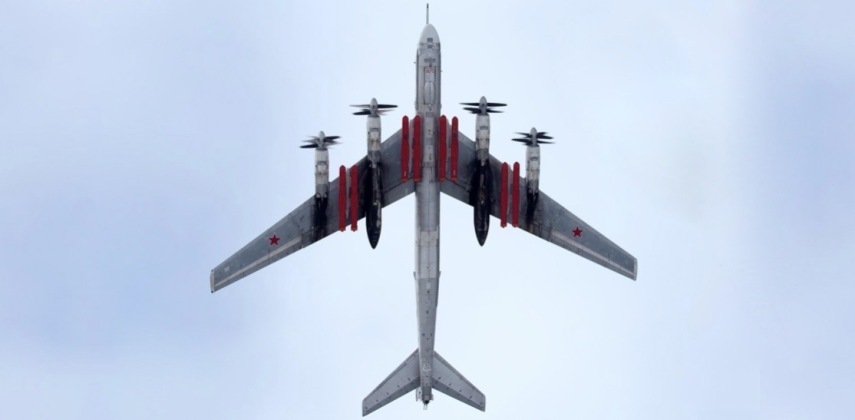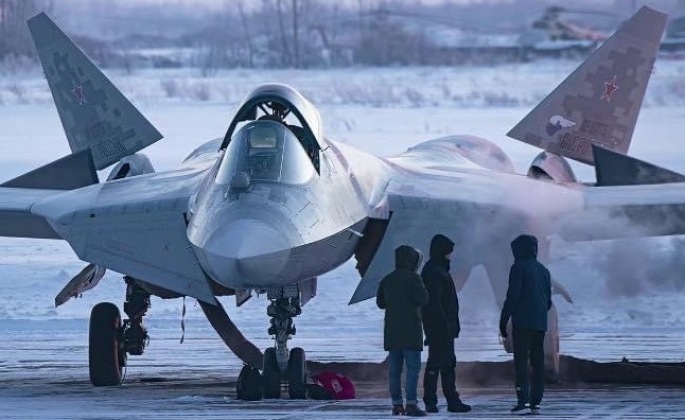News
Unrivalled Reach: Russia’s Su-57 Stealth Fighter Now Has a 3500km Range Radar Evading Cruise Missile

The Russian Air Force’s sole squadron of Su-57 fifth generation fighter aircraft has been equipped with a nee class of very long ranged cruise missile, according to Russian state media reports on October 31. The missile is reportedly based on the Kh-101/102 which equip Russia’s Tu-22M, Tu-95 and Tu-160 strategic bombers, which entered service in the mid 2010s with a range estimated at around 3,500km, very high levels of precision, and radar evading stealth capabilities. A source speaking to state media reported regarding the new missile’s integration: “Although this LRCM [long range cruise missile] is smaller than its analogues used in Russia’s long-range aviation, which currently includes the Tu-95MS and Tu-160 strategic bombers, the missile’s range is equivalent to those carried by the aforementioned aircraft.” Developers had managed to achieve “a significant reduction in the size of the new ammunition thanks to the perfectly refined design of the folding wing and internal layout, as well as the use of a new small-sized bypass turbojet engine,” the source elaborated.
The Kh-101/102 was developed for bomber sized aircraft, with even the Tu-95 intercontinental range strategic bomber’s weapons bays being to small to accommodate the missiles. forcing them to be mounted externally. Only the Su-34 strike fighter which is the heaviest fighter class in the world was considered capable of possibly carrying the missiles. To equip the Su-57 the missiles not only needed to be made considerably lighter, but also able to fit inside the aircraft’s internal weapons bays – as the fighter cannot carry missiles externally while maintaining its stealth profile. Although the Su-57 was initially widely criticised by Western observers as lacking in stealth capabilities, these judgements were made based on observations of prototypes with the production quality of serial production models demonstrating a finishing which could facilitate a much lower radar cross section. Not only do the Su-57’s stealth capabilities make it well suited to carry a very long range strategic cruise missile, but the fighter’s own range is also extremely long at well over double that of its American rival the F-35 – rivalled only by those of the Su-34 and the Chinese J-20. This allows it to launch missile strikes from well beyond Russian territory whether far over the Arctic or deep over the Pacific augmenting the munitions’ own long reach.

The Su-57 has had the widest array of air launched weapons developed for it of any fighter of its generation, and has the advantage of having been used far more extensively in combat than any other fifth generation fighter. The aircraft have participated significantly in operations in Ukraine, providing an entirely unique degree of combat testing combat testing against a state adversary with deployments including strike missions, air defence suppression, and according to several reports air to air combat as well. Its primary air to ground munition the Kh-59MK2 has been combat tested in both Syria, from prototype airframes, and in Ukraine from models in active service, and has a 300km range while also fitting inside the fighter’s internal weapons bays. The development of a much longer ranged missile, which may well also be combat tested in Ukraine, has the potential to allow Su-57 units to fill both strategic strike roles as well as tactical ones – including delivering nuclear strikes against very far off targets and partially replacing the Tu-22M3 bomber fleet – which has already seen funding for its modernisation cut significantly.

Before the development of the new cruise missile, the Su-57 already benefitted from a significant advantage in its engagement range in air to air combat over other fighters of its generation through integration of the R-37M air to air missile. A derivative of the R-37M better suited to internal carriage is also in advanced development stages, with the original missile reported to have been used by the fighters in combat over Ukraine. Russia’s defence sector has thus strongly emphasised the importance of very long ranged weapons onto the fighter, which can help compensate for shortcomings in other areas such as avionics compared to its American and Chinese rivals.
With Su-57 production having doubled in 2023, the fighter is expected to see its first full unit of 24 airframes formed in early 2024 – up from just 10 airframes at the beginning of 2023. Increasing the number of roles the fighter can fulfil has the potential to facilitate a much larger production run by allowing it to replace more different kinds of aircraft across the fleet, including not only Soviet Su-27 and MiG-29 fighters but also potentially bombers and interceptors as well. The Kh-101/102 is notably not the only missile developed for external carriage by bombers which has seen a miniaturised version developed for internal carriage by the Su-57, with the Kh-47M2 Kinzhal ballistic missile also reported in early 2020 to have seen its own miniaturised derivative reach prototype stages before beginning flight testing the following year.












